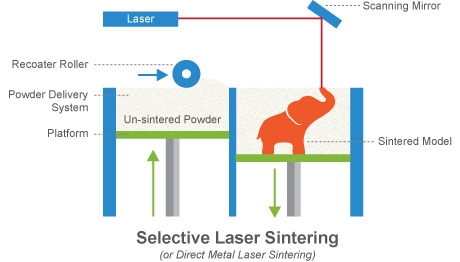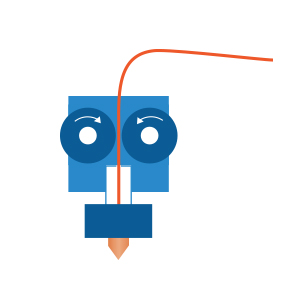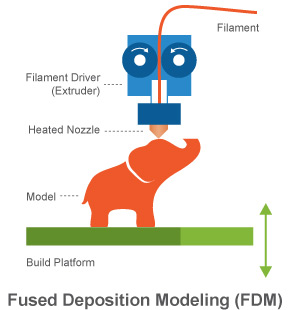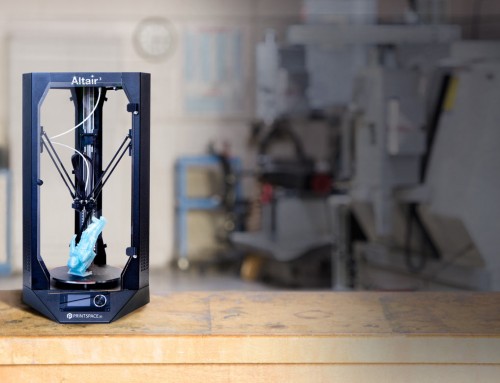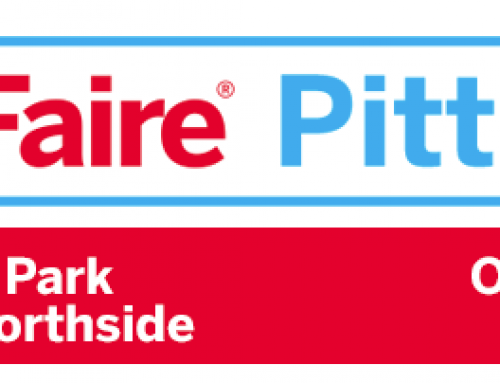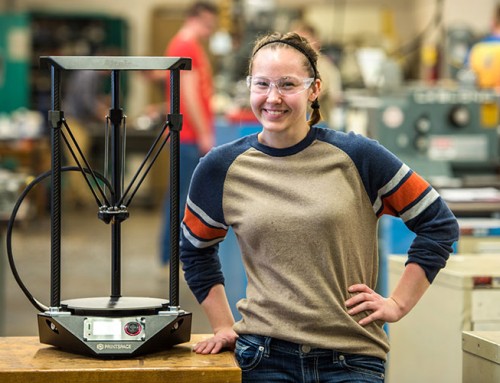The Main 3 Additive Manufacturing Methods
The term “3D printing” is an additive manufacturing method that adds material to create an object. There are three primary technologies centering on 3D printing: Selective Laser Sintering, Stereolithography, and Fused Deposition Modeling.
Fused Deposition Modeling (FDM)
The Fused Deposition Modeling process is similar to using an extremely precise glue gun for drawing. FDM (known by the open source community as Fused Filament Fabrication, or FFF) commonly uses plastic from a spool called “filament”. This spooled filament is similar to weed wacker line and is fed to the printer by motors. It is then melted by a heater inside the hot end, and extruded through the nozzle as a liquid onto the print bed where it immediately hardens and fuses to the layers below. The repetition of this process forms a 3D object layer by layer.
The FDM process is what desktop 3D printers commonly use. Currently this method of 3D printing is the most cost effective, but FDM can sometimes struggle with sharp corners and overhangs. Using secondary support material can often solve these 3D printing challenges.
Stereolithography
Stereolithography is another form of 3D printing that uses a different process to create additive layers of material. In this process a photo-reactive resin is used. Remember using a magnifying glass to concentrate sunlight as a kid? Stereolithography works kind of like that. It uses a laser to draw the solid cross-section of your model. While the laser is tracing the 3D model, a new layer of liquid resin is spread over the 3D object. This liquid hardens when the beam of UV light touches it, causing it to become solid. The newly hardened layer is then repositioned so the process can repeat. As each cross-section is drawn and adheres to the previous layer, they stack up to make the complete 3D object.
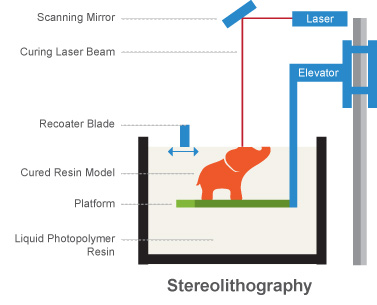
Selective Laser Sintering (SLS)
Selective Laser Sintering is very similar to Stereolithography with one main exception. Instead of using a liquid resin for 3D printing, a fine powder is used. The powder can be made out of a variety of materials including metal, plastic, glass or ceramic. A roller deposits this powder and then a laser, which is tracing the shape of the 3D model, is used to sinter or fuse the powder together. This creates one layer of the 3D object. The roller then puts down another layer of powder on top of the previous and another cross-section is built. The process repeats until the model is formed. At the end, all of the remaining powder is removed, and the 3D object emerges from the dust.
